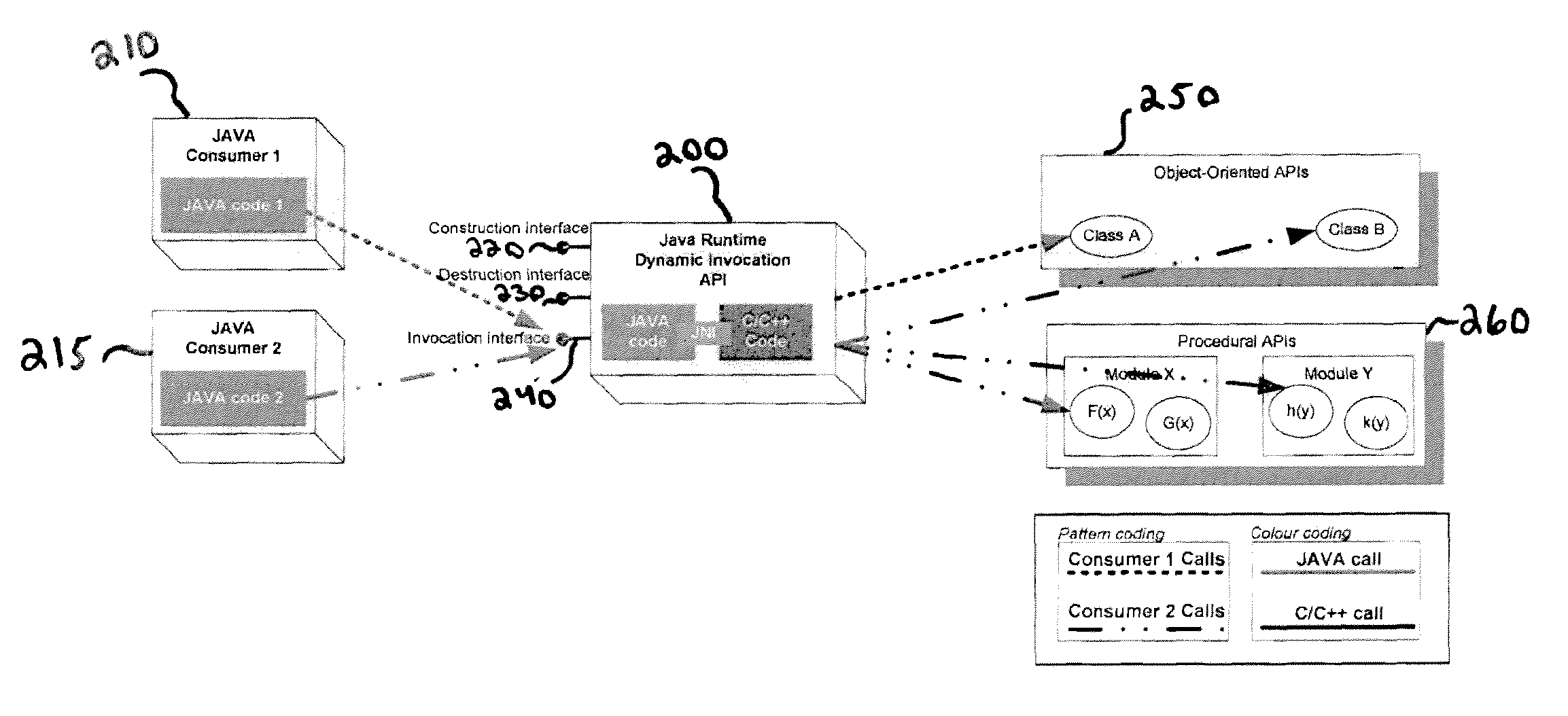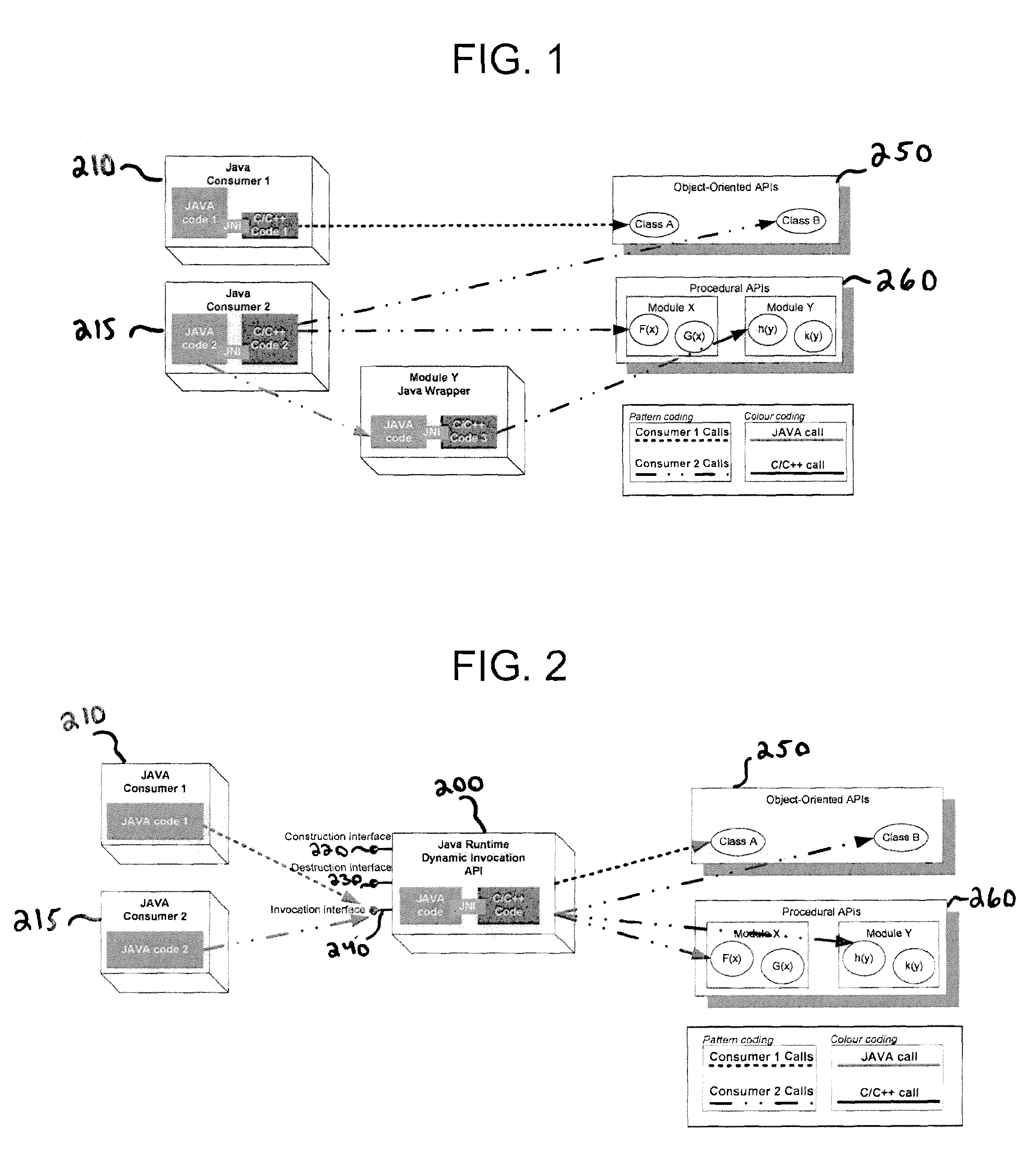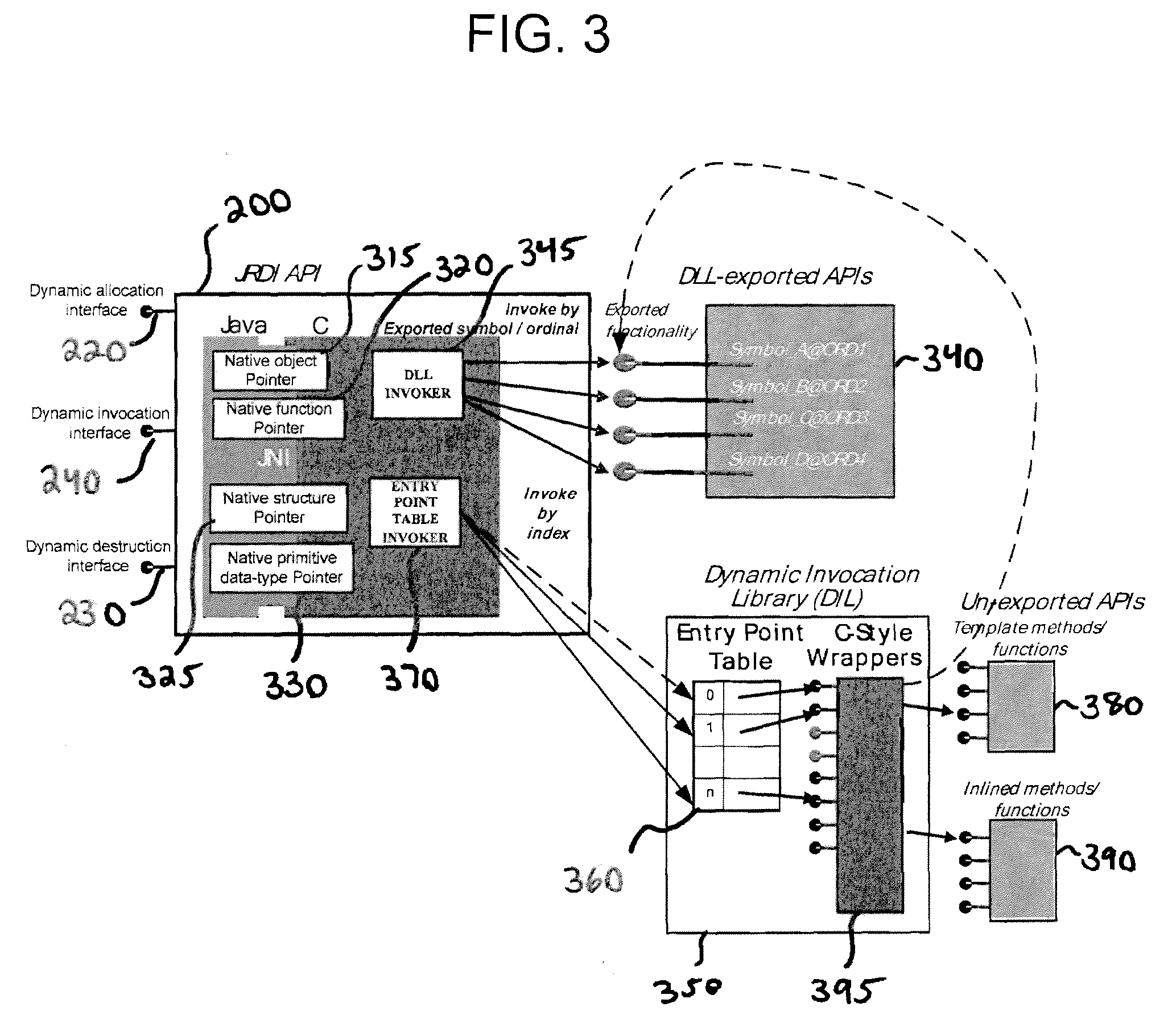System and method for reducing the static footprint of mixed-language JAVA classes
a technology of mixed-language java and static footprint, which is applied in the field of system and method for reducing the static footprint of mixed-language java classes, can solve the problems of difficult to avoid footprint explosion, large size of additional jniTM code, and significant increase in the final static footprint of javaTM components, so as to minimize the functionality gap and reduce the impact on the static footprint of each javaTM api
- Summary
- Abstract
- Description
- Claims
- Application Information
AI Technical Summary
Benefits of technology
Problems solved by technology
Method used
Image
Examples
Embodiment Construction
[0018]Various embodiments of the present invention involve a system and a method for minimizing the functionality-gap between JAVA™ and native platforms while keeping the impact on each JAVA™ API static footprint as small as possible. The various embodiments provide a general purpose mechanism for low-level bridging between JAVA™ and C / C++, enabling the dynamic invocation of native C / C++ functions and C++ class / object methods from the JAVA™ side without adding any additional ad hoc implemented native code to the overall JAVA™ component implementation. In this way, the need to write new native code when implementing a JAVA™ component that needs to invoke some native functionality is drastically reduced.
[0019]FIG. 2 is a representation demonstrating how native APIs may be invoked without the use of any additional invocation-specific JNI™ code according to various embodiments of the present invention. According to the various embodiments of the present invention, JAVA™ runtime is enric...
PUM
 Login to View More
Login to View More Abstract
Description
Claims
Application Information
 Login to View More
Login to View More - R&D
- Intellectual Property
- Life Sciences
- Materials
- Tech Scout
- Unparalleled Data Quality
- Higher Quality Content
- 60% Fewer Hallucinations
Browse by: Latest US Patents, China's latest patents, Technical Efficacy Thesaurus, Application Domain, Technology Topic, Popular Technical Reports.
© 2025 PatSnap. All rights reserved.Legal|Privacy policy|Modern Slavery Act Transparency Statement|Sitemap|About US| Contact US: help@patsnap.com



